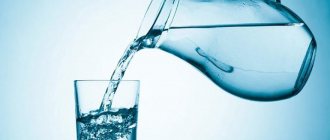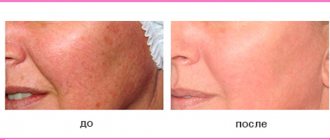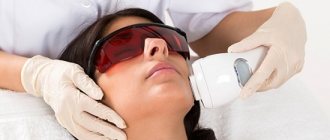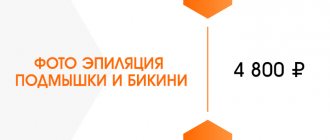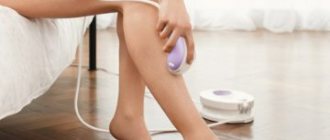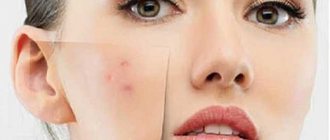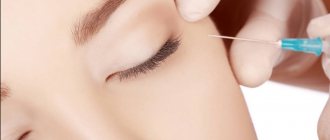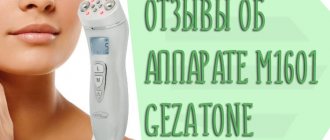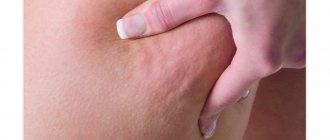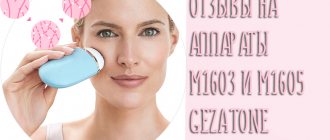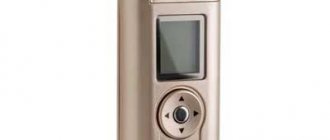The emergence of hardware procedures was a real breakthrough in cosmetology. If previously it was possible to restore youth and eliminate dermatological defects only in a radical way, now more delicate, but no less effective methods have appeared. One of them is phototherapy using the IPL Quantum device.
Light treatment is an advanced technique that has already proven its effectiveness. In the hands of an experienced cosmetologist, IPL Quantum works wonders, providing a comprehensive effect on the epidermis and simultaneously solving various dermatological problems. The result is clean, healthy and glowing skin.
Like all hardware procedures, phototherapy should be carried out in a specialized clinic by a qualified cosmetologist-dermatologist. It is necessarily preceded by a consultation with a doctor, which includes an examination and medical history. During such a preliminary conversation, the doctor identifies possible contraindications and determines treatment tactics depending on what problems need to be solved.
The essence of Quantum phototherapy
The key feature of the method is its versatility. Today, photorejuvenation, or the method of selective photothermolysis, successfully replaces many traditional cosmetic treatments - chemical and mechanical peelings, microdermabrasion, thermolifting.
The concept of selective photothermolysis was developed in the eighties of the last century. Scientists have discovered that the light beam can act selectively on tissue. A certain wavelength of light is absorbed by biological targets - so-called “chromophores”. Such targets include melanin and hemoglobin, which, when exposed to light, are heated to a critical temperature and destroyed. Each chromophore absorbs a specific wavelength of light. The surrounding tissues are not damaged.
A decade later, based on this concept, IPL (Intensive Pulse Light) technology appeared. It complemented already existing laser rejuvenation techniques.
How is photorejuvenation different from laser?
IPL and laser are two areas of photocosmetology. The laser beam has a fixed wavelength (depending on the type). This means that with its help you can only solve a specific problem. For example, a ruby laser (690 nm) is used to eliminate black and dark brown pigment formations, and a wavelength of 1064 nm allows you to destroy spider veins.
IPL phototherapy technology opens up more possibilities thanks to a wider spectrum of radiation. The wavelength is adjustable in the range from 560 to 1200 nm, therefore, the IPL Quantum device can be used to eliminate a variety of defects from pigmentation to vascular pathologies. This is the best choice if you need to solve several problems at the same time, for example, removing age spots and rosacea, acne and spider veins.
| RED 625-700 nm | Anti-Aging: Fights wrinkles and increases collagen production for smooth, youthful skin. |
| PURPLE 400-420 nm | 400-420 nm Cell rejuvenation: increases cell regeneration and renewal. |
| BLUE 440-500 nm | 440-500 nm Anti-acne and teeth whitening: Eliminate acne-causing bacteria, reduce pimples. |
| CYAN 500-520 nm | 500-520 nm Soothes skin: Soothes irritated skin. Helps reduce capillaries. |
| GREEN 520-565 nm | 520-565nm Skin Balancing: Helps restore natural skin tone. |
| YELLOW 565-590 nm | 565-590 nm Reduces redness: Helps reduce redness associated with inflammation, sunburn and rosacea. |
| ORANGE 590-625 nm | 590-625 nm Revitalizes skin: promotes soft and fresh-looking skin. |
| INFRA RED 750-1000 nm | 750-1000nm Penetrates deep into skin to heal and enhance results. |
During the procedure, a flash lamp is used that emits intense pulsed light passing through optical filters that allow the light stream to be narrowed and the wavelength to be adjusted depending on the individual characteristics of the patient and the task facing the doctor. At the same time, ultraviolet rays harmful to the epidermis are also cut off.
After passing through the filters, the light reaches the skin and is absorbed by chromophores. It is important to note here that in addition to natural pigment and hemoglobin, ink can act as targets for radiation. For this reason, Quantum phototherapy is not used on tattooed areas.
Some of the energy is dissipated, heating tissues away from biological targets. This phenomenon is called thermal relaxation. To ensure that the degree of heating does not turn out to be critical and does not cause tissue damage, it is necessary to carefully calculate the wavelength, power and duration of the pulses depending on the type of pathology, skin type and other individual characteristics of the patient. It is for this reason that phototherapy can only be trusted by a cosmetologist in a specialized clinic, and not by specialists in ordinary beauty salons.
Important: laser photorejuvenation is also popular, however, unlike IPL, this technology requires a longer recovery period with comparable effectiveness of the procedures.
Reviews
Immediately after the procedure, the face looks exactly as Evdokimov described in his humoresque “And the face is so red.” In the photo on the left you can see that the pigment spot under the eye has “set” - it has darkened, and it looks like a crust. Within a week or two, this spot peeled off neatly - imperceptibly, without obvious peeling. And the redness subsided the next morning. A month after the first procedure, I began to evaluate the first results. I was pleased. Very. The skin became cleaner, the oil content decreased, pigmentation became almost invisible, and so did the redness from blood vessels. My overall appearance became much fresher, my skin glowed as if I had just returned from vacation*. Of course, I was euphoric. And I went for the second procedure, naturally expecting that after it the skin would become completely perfect. However, after the second session, practically nothing changed. And as time passed, the situation began to worsen.
spring_illusion
https://irecommend.ru/content/foto-omolozhenie-foto-lechenie-sosudov-i-pigmentatsii-na-apparate-m22-moi-rezultaty-spustya
I don’t see any extraordinary improvements... BUT! I now look as if I had just returned from vacation - refreshed, rested, with an even complexion and a tightened oval. Accordingly, there is an effect! I hope that this effect will be prolonged like other laser techniques. Photorejuvenation has fulfilled its goal - rejuvenation is obvious, more precisely on the face. A month and a half after the procedure, improvements in skin condition and turgor are visible, the oval has tightened a little, and the skin color has evened out. But I didn’t see such a WOW effect. Yes, apparently, this procedure is not aimed at dramatic changes/improvements, but rather at maintaining the general appearance.
Ellen
https://irecommend.ru/content/fotoomolozhenie-na-apparate-m22-sochetayushchem-v-sebe-ipl-intensivnyi-impulsnyi-svet-i-neod
Sorry for the money…. It’s better to get a couple of good peelings for the money. My opinion. I did this to remove pigments. I look at the before photo.. and understand that everything remains in place. The color of the pigment has become disgustingly yellow and seems to me more noticeable.
Guest
https://www.woman.ru/beauty/plastic/thread/3861700/11/
Photorejuvenation is now quite in demand in salons. This is a truly useful treatment procedure that helps maintain the beauty and youth of the skin. But for radical changes, such as removing wrinkles and tightening the oval of the face, it is not suitable - there are other, more effective and budget-friendly methods for this.
- Author: woman
Rate this article:
- 5
- 4
- 3
- 2
- 1
(7 votes, average: 3.6 out of 5)
Share with your friends!
Causes of skin aging
Previously, it was believed that appearance deteriorates only over time. Now, along with the term chronoaging, cosmetologists also operate with the concept of photoaging. It refers to changes in the dermis caused by ultraviolet radiation. Because of the love for sunbathing, the skin becomes flabby, insufficiently elastic and excessively dry, fine wrinkles, pigmentation changes, and telangiectasia appear.
IPL is now considered the gold standard for treating signs of photoaging. Thanks to targeted pulsed light, wrinkles, age spots and vascular pathologies disappear.
Achieved effect
During facial photorejuvenation, the production of skin proteins is activated, as a result of which it acquires an elastic and toned appearance.
- The process of smoothing out wrinkles occurs;
- Skin tone is amazingly improved;
- The method effectively fights freckles and age spots;
- Inflammation goes away;
- Pores narrow;
- The skin is moisturized as much as possible;
- The face acquires a natural and healthy color.
If the cosmetologist's recommendations are not followed, undesirable consequences may occur, such as photodermatosis, a skin disease that is difficult to combat. But with the right and reasonable approach to the procedure, this innovative method has a number of obvious advantages, which we listed above.
In Europe, facial photorejuvenation has gained wide popularity as one of the best ways to restore youthful and healthy skin to the face.
How is the photorejuvenation procedure performed?
- The session is conducted in an office without mirrors or glossy surfaces to protect from reflected light.
- The doctor and patient must wear protective glasses that will protect their eyes from bright radiation. Lenses are used with the maximum degree of protection, but it is still better to close your eyes during a photorejuvenation session.
- The cosmetologist adjusts the device taking into account the individual characteristics of the patient, and then begins to treat the “problem” area of the skin with the emitter. The IPL system handle has a cooling system built into it, so the skin does not overheat and there is no discomfort.
- The duration of the session is about 20-30 minutes depending on the area of treatment. The doctor will then tell you what care is required after phototherapy.
High expectations
If we talk about the effectiveness of the facial photorejuvenation course, it is worth noting that many patients, often under the influence of advertising, endow this technique with mythical properties and, accordingly, expect too much from it. Hence the disappointment in the result obtained. In addition, we should not forget about the individual characteristics of the body. Different people's skin responds differently to radiation stimulation: a miraculous transformation of a friend's face does not at all mean an equally beneficial effect on the appearance of another woman.
Experts from the aesthetic industry themselves believe that an objective improvement in the condition of the dermis, invisible to the average person, is much more important than the visual effect. And to enhance external rejuvenation, if phototherapy alone is powerless, it is recommended not to neglect other achievements of modern cosmetology: mesotherapy, contouring and other popular procedures, in addition to hardware ones.
A weak result or its complete absence can be explained by a violation of the photorejuvenation technique, incorrectly selected filters, or exhausted lamps of the phototherapy apparatus. The same reasons can cause complications after the procedure, such as burns, scars, and skin pigmentation disorders.
Advantages of the method
The main advantage of photorejuvenation is its complex effect. There is no need to deal with each defect separately, spending time and money on regular visits to the clinic. During one session, several tasks are solved at once:
Pros:
- Unwanted pigmentation is eliminated, facial tone is evened out.
- Dilated vessels coagulate, which means spider veins and spider veins disappear.
- Collagen production is stimulated by destroying deformed fibers and stimulating collagenosis.
- Blood microcirculation is stimulated, which means skin nutrition improves.
An important advantage of the technique is its targeted action. Healthy tissues are not injured during the treatment process, and this avoids long-term rehabilitation after photorejuvenation.
Possible consequences
Since the technique is effective and painless, clients who have completed the first session try to complete the therapy completely. There are no obvious negative reviews. Thus, the scope of consequences and results includes:
- tightening, increasing skin elasticity;
- smoothing out wrinkles;
- narrowing of skin pores;
- normalization of healthy skin tone;
- reduction of foci of inflammation;
- getting rid of freckles and pigmentation;
- reduction of dryness, tightness, peeling of the epidermis.
Prolonged redness, swelling, and inflammatory processes after photorejuvenation of the face are excluded, therefore doctors, as a rule, do not resort to a rehabilitation period. And yet, improper compliance with the recommendations, indications and requirements of the cosmetologist performing the procedure is mandatory.
You may be interested in: Laser skin rejuvenation
Indications
Almost every person who has crossed the 25-year mark has indications for photorejuvenation using the IPL Quantum device. Phototherapy brings the skin closer to ideal - not only eliminates visible defects, but also evens out the shade and structure of the epidermis, increases elasticity, and improves turgor. The production of collagen, a protein compound responsible for the elasticity of the skin, is activated. Over the years, less and less collagen is produced, which leads to sagging and wrinkles, and IPL allows you to turn back the clock and restore lost elasticity.
Let's take a closer look at what shortcomings can be eliminated using selective photothermolysis technology.
- Spider veins . Formations resembling red or purple spiders completely disappear after coagulation of dilated vessels that absorb light energy.
- Vascular networks . Another vascular pathology that can be easily eliminated using phototherapy using the Quantum device. The capillaries are coagulated, while the surrounding tissue remains unharmed.
- Cuperosis . Light energy is absorbed by hemoglobin in dilated vessels. The IPL technique allows you to completely remove rosacea, remove redness and improve the condition of the skin in the treated area.
- Rosacea . Therapy for this disease must be comprehensive, and phototherapy is an important part of it. Under the influence of pulsed flashes, small vessels dissolve, redness disappears, and the complexion becomes even.
- Dark spots . In this case, light energy is absorbed by melanin. As a result of treatment, the stains completely disappear.
- Acne and post-acne . The selective photothermolysis method has a comprehensive effect on the skin, improving its condition. Among other things, the technique allows you to reduce the production of sebum and reduce the size of pores, preventing the occurrence of acne. The technique also copes with spots left after acne. At the same time, you cannot expect to get rid of acne with phototherapy alone - this disease requires complex therapy.
- Hemangiomas . Vascular formations that appear in childhood or are congenital - hemangiomas - attract attention and can greatly spoil the appearance. Such defects respond well to treatment with light flashes. The vessels accumulate energy and coagulate, as a result of which there is not even a trace left of a bright red or purple spot.
- Wine stains . Photothermolysis of a port-wine stain allows you to destroy vascular formations and even out skin tone.
On average, for phototreatment of telangiectasia, one to four procedures are sufficient. Pigment formations, depending on the depth of location, also disappear after one or two or three to five sessions.
Skin care after using the skin rejuvenation device
After carrying out the photorejuvenation procedure, it is necessary to apply an anti-inflammatory cream to the skin. If you feel dryness and tightness, you can also lubricate your skin with anti-inflammatory cream at night. In addition, after the procedure, you should not wet your face for 24 hours.
The next day, you can wash your face and apply the cream again, then apply it 3 times throughout the day. In the evening you are allowed to take a short shower.
The next day, carry out the same skin care. And on day 3, morning and evening, use a moisturizer, you can use decorative cosmetics.
Phototherapy of the face: contraindications
The first group includes diseases and conditions when phototherapy cannot be carried out under any circumstances. This:
- Pregnancy. Although light treatment has no effect on the fetus, the procedure may be uncomfortable for the expectant mother. In addition, due to hormonal changes, the body may react unconventionally to treatment. For these reasons, it is worth postponing skin photorejuvenation until better times.
- Lactation. During breastfeeding, a woman's hormonal background changes, and this often leads to an increase in photosensitivity.
- Oncological diseases. If there are malignant neoplasms in the body, then any hardware procedures are prohibited. After completion of drug and especially chemotherapy, photorejuvenation is possible with the permission of the attending physician.
- Epilepsy. Flashes of light combined with unpleasant sensations can trigger a seizure.
- Photosensitivity. If the epidermis is hypersensitive to light, treatment using the IPL Quantum device is prohibited.
- Diseases in the acute stage. Exposure to flashes of light can worsen the condition of those suffering from any acute illness, so first you need to cure the underlying disease, and then work on rejuvenation.
- Tanning, tattoos in the treatment area. In tanned epidermis, the content of melanin, which is the biotarget of light rays, is increased. This means that intense radiation will affect not only skin defects, but also surrounding tissues. You'll have to wait until the tan goes away and then start photorejuvenation. The same applies to tattoos - the ink will absorb light energy.
- Violation of the integrity of the skin in the area of the procedure.
- Taking medications for which phototherapy and UV are contraindicated (retinoids, anticoagulants, tetracycline antibiotics, iron-containing drugs).
Relative contraindications include:
- Benign neoplasms. If they are located directly in the treatment area, then the procedures will have to be abandoned. However, the very fact of the presence of benign tumors in the body is not a contraindication. However, before starting photo exposure, you should consult a doctor.
- Chronic diseases in remission. Outside periods of exacerbation, phototherapy using the IPL Quantum device does not pose a danger to those suffering from chronic diseases. However, before a course of photorejuvenation, you must consult a doctor and make sure that the procedures will not harm your health.
- Taking certain medications. The list includes all medications that have photosensitizing properties. You will have to give up retinoids, iron supplements, and some antibiotics (tetracycline and its derivatives). Anticoagulants are also prohibited. You should not refuse medications prescribed by doctors on your own initiative - you need to discuss this issue with your doctor and only after that plan facial photorejuvenation.
How to prepare for photorejuvenation?
The procedure does not require complex or expensive preparation. All that is required from the patient is to provide maximum rest to the skin two to three weeks before the visit to the clinic. It is necessary to abandon all types of aggressive influences, for example, mechanical and chemical peels. Mesotherapy and biorevitalization are indicated at least two weeks before IPL phototherapy. You will also have to stop (of course, after consulting your doctor) from taking medications that increase sensitivity to light and/or affect blood clotting. The list of prohibited drugs includes tetracycline and its derivatives, anticoagulants, some anti-inflammatory drugs, retinoids, and iron supplements.
During the month before the procedure, you must protect yourself from ultraviolet radiation. Use sunscreen outside and avoid visiting the solarium. The use of self-tanning is also prohibited, since the darker the skin tone, the less effective the selective photothermolysis method will be.
When not to use the device for photoepilation
Although the photoepilation method is safe, under certain conditions of the body it can only cause harm. Therefore, it is strictly prohibited to use the equipment with the following contraindications:
- infectious diseases;
- individual intolerance to light;
- cardiovascular diseases;
- oncological neoplasms;
- mental disorders;
- damage to skin integrity;
- the presence of a built-in myostimulator or metal implants.
It is important to understand that professional photoepilation equipment is a serious system, the improper use of which can lead to serious consequences. Before approving the procedure, the specialist working with the system must study the patient’s medical history in detail and refuse to perform the procedure if he detects at least one of the above conditions.
Recommendations after photorejuvenation
Immediately after the rejuvenation session, the face turns red, swelling appears, and there may also be a slight burning sensation and small bruises. The duration of the rehabilitation period is on average 3-4 days and depends on the area of treatment. If a single formation is removed, the swelling after photorejuvenation may subside within a few hours. If we are talking about eliminating spider veins or freckles over a large area, then redness and swelling may persist for several days. As the redness disappears, changes become noticeable - a decrease in vascular and pigmentary pathologies. As for the rejuvenating effect, it increases gradually over the course of a month, starting from the first hours after treatment.
To ensure that rehabilitation after photorejuvenation is not too long, facial care for two weeks should be as gentle as possible. Do not injure the skin; scrubs and chemical peels are prohibited. Visiting bathhouses, saunas, even hot baths is prohibited. You need to avoid the sun, refuse to visit the solarium and relax on the beach. Sports activities should also be kept to a minimum if possible. Finally, medications that had to be stopped before the procedure are prohibited for another two weeks after the end of the course.
Following all the recommendations of a cosmetologist will allow you to maintain the effect for a long time. Beautiful, evenly colored, elastic skin without defects that seems to glow from within will delight you with its beauty for a long time.
How to properly use photo-rejuvenating devices at home
Before starting photorejuvenation at home, the device should be tested for skin sensitivity:
- one flash at the site of the desired procedure;
- select the power suitable for the given area;
- After a day, look at the skin, if it does not turn red, does not peel and does not burn, then you can use the device.
If the above points exist, you need to repeat the test. If the unpleasant sensations recur, this device is not suitable.
Photorejuvenation is usually done on clean skin , but there are cases (this is indicated in the instructions) when it is necessary to use a special cream. Be sure to carry out the procedure in sunglasses. Finally, apply nourishing cream to the skin.
Course 8-12 times, for 2-3 months. Usually the effect is visible after a month, and the full effect after 3. Start the next course after resting for at least 3 months.
It is important not to overuse so as not to harm the skin. In addition, it is recommended to read the instructions for each device.
You cannot - during the treatment process and for 14 days after, allow direct sunlight, go to the bathhouse, sauna and solarium. Also, after the procedure, do not exercise for the first 2 days. The best periods for photorejuvenation are autumn and winter.
